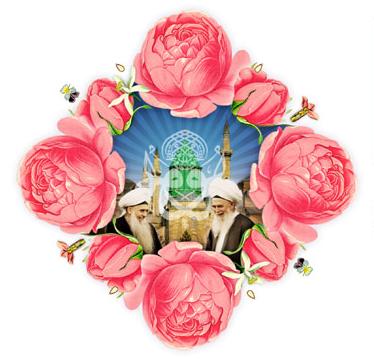
About The Sufi Way
The most distinguished Sufi Way is a school of thought and practice that stood in the vanguard of those groups which disseminated truth and fought against evil and injustice, especially in Central Asia and India in the past, in China and the Soviet Union in modern times, and in Europe and North America today. Sufi shaykhs who took up political, social, educational and spiritual roles in their communities, acting according to the Holy Quran and the Sunnah of the Prophet
The most distinguished Sufi Order is the way of the Companions of the Prophet and those who follow them. This Way consists of continuous worship in every action, both external and internal, with complete and perfect discipline according to the Sunnah of the Prophet. It consists in maintaining the highest level of conduct and leaving absolutely all innovations and all free interpretations in public customs and private behavior. It consists in keeping awareness of the Presence of God, Almighty and Exalted, on the way to self-effacement and complete experience of the Divine Presence. It is the Way of complete reflection of the highest degree of perfection. It is the Way of sanctifying the self by means of the most difficult struggle, the struggle against the self. It begins where the other orders end, in the attraction of complete Divine Love, which was granted to the first friend of the Prophet, Abu Bakr as-Siddiq (r).
The First Spiritual Inheritors of the Prophet
Historically speaking, the Naqshbandi path (tariqat) can be traced back to the first of the Rightly-Guided Caliphs, Abu Bakr as-Siddiq (r), who succeeds the Prophet (s) in his knowledge and in his role of guiding the Muslim community. Allah said in the Holy Qur’an, “He was the second of two in the cave, and he said to his friend: ‘do not be sad, for God is with us'” [9:40]. Of him the Prophet (s) said, “If I had taken to myself a beloved friend, I would have taken Abu Bakr as my beloved friend; but he is my brother and my companion.”
What distinguishes the Naqshbandi school from other Sufi orders was the fact that it took its foundations and principles from the teachings and example of six bright stars in the firmament of the Prophet (s). These great figures were: Abu Bakr as-Siddiq, Salman al-Farisi, Jafar as-Sadiq, Bayazid Tayfur al-Bistami, Abdul Khaliq al-Ghujdawani, and Muhammad Baha’uddin Uwaysi al-Bukhari, known as Shah Naqshband–the eponymous Imam of the tariqat.
Behind the word “Naqshband” stand two ideas: naqsh which means “engraving” and suggests engraving the name of Allah in the heart, and band which means “bond” and indicates the link between the individual and his Creator. This means that the Naqshbandi follower has to practice his prayers and obligations according to the Holy Qur’an and the Sunnah of the Prophet (s) and to keep the presence and love of Allah alive in his heart through a personal experience of the link between himself and his Lord.
Besides Abu Bakr as-Siddiq, who are these stars in the firmament of the Prophet (s)? One of them was Salman al-Farisi (r). His origin was Isfahan in Persia and he was the one who advised the Muslims to dig a trench in the battle of Ahzab. After the Muslims seized al-Mada’in, the capital city of Persia, he was made Prince and governor of that city and remained there until his death.
The Titles of the Naqshbandi Golden Chain
Naqshbandiyya means to “tie the Naqsh very well.” The Naqsh is the perfect engraving of The Divine’s Name in the heart of the student (murid).
The designation of the Naqshbandi Golden Chain has changed from century to century. From the time of Abu Bakr as-Siddiq (r) to the time of Bayazid al-Bistami (r) it was called as-Siddiqiyya. From the time of Bayazid to the time of Sayyidina Abdul Khaliq al-Ghujdawani it was called at-Tayfuriyya. From the time of Sayyidina ‘Abdul Khaliq al-Ghujdawan to the time of Shah Naqshband it was called the Khwajaganiyya. From the time of Shah Naqshband through the time of Sayyidina Ubaidullah al-Ahrar and Sayyidina Ahmad Faruqi, it was called Naqshbandiyya.
From the time of Sayyidina Ahmad al-Faruqi to the time of Shaikh Khalid al-Baghdadi it was called Naqshbandi-Mujaddidiyya. From the time of Sayyidina Khalid al-Baghdadi until the time of Sayiddina Shaikh Ismail Shirwani it was called the Naqshbandiyya-Khalidiyya. From the time of Sayyidina Isma’il Shirwani until the time of Sayyidina Shaikh ‘Abdullah ad-Daghestani, it was called Naqshbandi-Daghestaniyya. And today it is known by the name Naqshbandiyya-Haqqaniyya.



